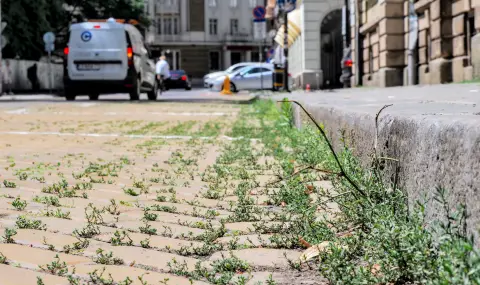The yellow ones are already green, most of them are overgrown with grass and this is not the result of a green policy, but of the lack of maintenance and care for this symbol of the capital. In recent years, the yellow cobblestones have become the center of the political struggle for power in the Metropolitan Municipality. “The landscaping” on the yellow cobblestones makes an extremely bad impression both on the residents of the capital and on the numerous foreign tourists.
This is what BGNES summed up.
Greenery has taken over the entire space on “Knyaz Alexander I” from the intersection with “ul. Gurko“ to the space between the Palace and the Parliament and continues along “Moskovska“ street. The grass is gradually occupying the territory near the Ministry of Defense and the Presidency, near the unique building of the former "Imperial" grand hotel, where trees grow along its facade, which BGNES has already written about.
Mainly the emphasis fell on their arrangement and rearrangement, but their care does not end there. And the results of carelessness are already visible to all of us.
„The landscaping” on the yellow cobblestones makes an extremely bad impression both on the citizens of the capital and on the numerous foreign tourists who necessarily visit these emblematic places in the center, which are covered with this otherwise unique pavement.
The yellow paving stones, which have become a symbol of the central part of Sofia, were imported from Austria-Hungary. In 1907, the first 28,400 square meters were paved, which were subsequently increased to almost 60,000. There are several versions of their appearance. The most famous of them connects them with the wedding of Prince Ferdinand, but it has been rejected by historians. I BGNES
